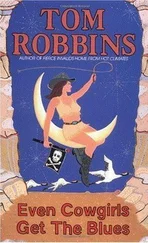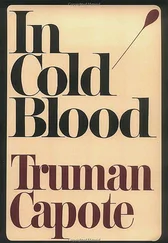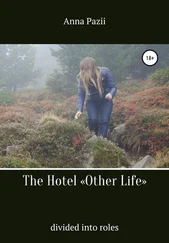From the stuffy sickroom of button-downed 1950s America, a vanilla-flavored, beige-draped decade whose lodestar was the pine-scented patio candle, I looked out on what appeared to be a kind of behavioral springtime — a metaphoric season of irrepressible renewal; fertile and wild and green and free — and felt an urge to go running around in it in my underwear. Alas, barely had its first robin chirped before my bohemian spring was replaced by regimental winter. Leave having expired, I now reported for duty to a base outside Omaha, Nebraska, where for the next twenty months I would work three stories underground in a theoretically nuclear bombproof building, a Cold War fortress without a single window to jump out of.
Offutt Air Force Base, Nebraska, is headquarters of the Strategic Air Command, whose mission during Cold War tensions was to be poised and prepared for Hot War every minute of every day. At all times, day and night, weekends and holidays (including the alleged birthday of “the Prince of Peace”) there were SAC bombers in the air, each freighting a payload of atom bombs, their crews awaiting the signal to proceed to a selected target and blow it into radioactive dust. Once the U.S. president had hung up the iconic red telephone, the next call, the order from Washington to let the hell begin, would be answered in the building where I worked.
There would be any number of potential targets blinking on the giant electric wall maps inside the SAC nerve center, and among the factors involved in determining which one or ones to actually bomb would be the prevailing flying conditions in the vicinity of each site. Pilots would need to know what the weather would be like in obscure corners of the Eastern Bloc, and it was up to my Special Weather Intelligence unit to supply them with the most recent information. If, for example, a cold front with heavy snow appeared to be moving in on a missile base near Cheboksary, reducing visibility, a strike might be diverted to a submarine station at Sevastopol, where winds were favorable and the ceiling high.
How would we know? Meteorological espionage. Clandestine ham-radio operators in inner Outer Mongolia or some Podunk part of Pskov would transmit — in code — the amount and type of cloud cover, wind speed and direction, temperature, dew point, barometric pressure, and ground-level visibility (how, or if, they were compensated for this secret and certainly dangerous work, nobody ever said) to us boys at Offutt; where we would then decode it, encrypt it in a code of our own, and plot the numbers and symbols with fountain pens onto paper maps. From that information, our forecasters would connect the dots to develop a pretty good picture of present and near-future atmospheric conditions throughout the Soviet Union and beyond. All that was missing was a jolly TV pitchman to advise the husbands of Nizhny Novgorod that “Tuesday might be a good day to dust off those golf clubs.”
Despite the high security and overtones of high drama (Dr. Strangelove would have felt right at home there), my work in Special Weather Intelligence was for the most part as routine as it was cloistered: as I’ve said, much of my time was spent in a bunker deep underground. An escape hatch, however, like bohemia itself, can be a state of mind, and in the midst of SAC’s ongoing dress rehearsals for nuclear war, surrounded by Nebraska’s ubiquitous feedlots and cornfields, there did exist opportunities to unpack one’s “tender roots.”
Back in Richmond during my leave, B.K. - the painter — weight lifter — bashful clown — had given me, offhandedly, an introductory course in art history. As we strolled the cobblestone alleys of the Fan District, drank beer at Eton’s on Grace Street, or leafed through coffee-table books and art magazines at his studio, B.K. prattled on and on about Rembrandt, Cézanne, Caravaggio, et al, seeming at times to be astounded that such men had actually existed. Though he particularly liked recounting gossip, probably fictionalized, about the artists’ personal lives, B.K. also had been able to explain to my satisfaction the differences between Analytic and Synthetic Cubism, and how the Impressionists were able to lead the viewer into mixing color in his or her own eye. Not long after arriving in Nebraska I discovered to my delight that Omaha’s Joslyn Museum was home to an impressive collection of everything from ancient Greek pottery to Renaissance masterworks (Titian, El Greco) to Impressionist gems by Pissarro, Monet, and Renoir.
After I had purchased my first car — it cost fifty bucks, worth every nickel — I took to spending free days wandering the Joslyn galleries, where, among other things, I tried to reconcile Renoir’s plump and rosy, wine-warmed wenches with the graceful if sinister beauty of the B-47 bombers nurtured and nourished at my air force base, eventually concluding that anything that says yes to life (a Renoir) is automatically saying no to war, regardless of how attractively its weapons and justifications may be packaged. Thus, like those bohemians with whom he was feeling a growing kinship, Airman Second Class Tommy Rotten woke up one morning to find himself once and for all a pacifist.
There was also music in Nebraska. Specifically, there was jazz, long the official sound track to all things bohemian in America, except for the years roughly between 1962 and 1980, when rock and roll ruled the waves. (Thelonious Monk’s “ ’Round Midnight” is modern bohemia’s national anthem.) More specifically, there was the incongruously named New York Jazz Workshop, an ensemble whose founding members each had at one time played with big-name jazzmen in Manhattan, so the name was not entirely presumptuous. Headquartered in Omaha, the New York Jazz Workshop (very contemporary, very cool) traveled all over the Midwest, playing mostly college venues, but every Sunday afternoon it held forth in Omaha’s Red Lion Lounge — and every Sunday afternoon when I wasn’t down in the bowels of the earth, plotting weather maps, I was at the Red Lion at a table near the bandstand.
It was my disorienting relationship with Billie Holiday (first mocking, then adoring) that had yanked me through jazz’s swinging door (another boon from that transformative leave in Richmond), and by my second year in Omaha, I’d become so immersed in the medium — in its audacious bending of notes, yo-yoing of pitches, and rainbowing of rhythms as it determinedly explored new ways to play and hear music — that I naively presumed myself qualified to write something about it. When word reached me that the New York Jazz Workshop was in the process of recording an album, I sat at the little government-issue desk in my barracks and penned what I presumed to be liner notes.
The next Sunday, at the Red Lion, I handed the pages to the group’s ostensible leader. Apparently, he perused my notes, and favorably so, during intermission because after the break he read aloud what I’d written, verbatim, over the bandstand microphone. The audience applauded. The musicians applauded. The jazzmen I’d been applauding every Sunday for a year or more were now applauding me . It’s hard to describe the elation I felt. Vaulted to a peak of pleasure, my heart took a drum solo worthy of Joe Morello.
Several years passed before it dawned on me that they were applauding my use of language, itself rather audacious, rather than my woefully inadequate knowledge of jazz. Nevertheless, that experience was a pivot point for me. After a lengthy absence, I began to write again, and shortly before leaving Offutt and the military, I entered and won another air force short-story contest. This story concerned a man who first psychologically and then physically turns into a mosquito. A month or so later, I submitted it to Weird Tales magazine — and received my first ever rejection slip.
Читать дальше












